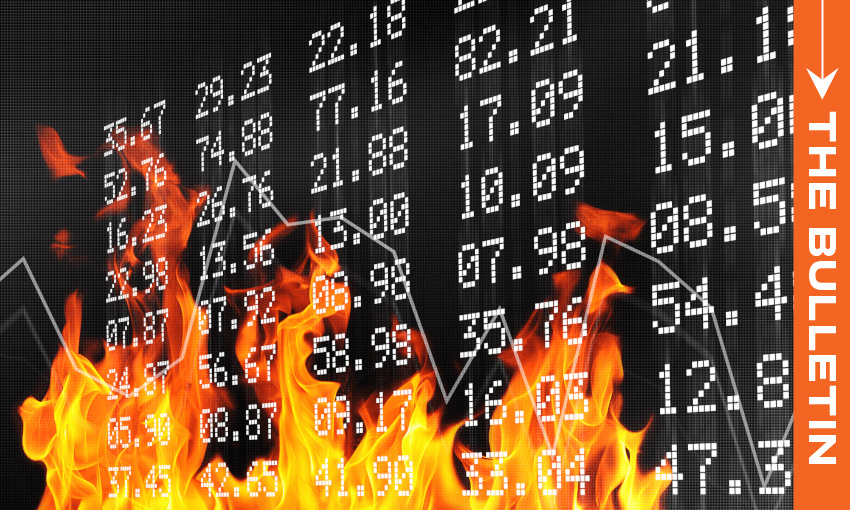It was a scary day for investors, but the long-term effects may be minimal, writes Catherine McGregor in today’s extract from The Bulletin.
To receive The Bulletin in full each weekday, sign up here.
What just happened?
“Chaos”, “rout”, “freefall”: headline writers were tripping over themselves to come up with dramatic descriptions of what happened in the markets this week. On Monday Japan’s Nikkei fell 12%, the biggest single-day fall since the Black Monday crash of 1987, and other markets across Asia, US and Europe also saw major drops. In Australia, more than AU$100 billion was from local shares in the worst sell-off in four years, reports 9News. Tech stocks were hit hardest: chip maker Nvidia, which was recently named the world’s most valuable company, was down by as much as 15% at one point on Monday, reports the Guardian, while bitcoin also fell sharply. The VIX index – a tracker for the volatility of the US stock market – logged its largest ever intraday jump on Monday, closing at its highest since the worst of the Covid economic crisis in October 2020. While both the markets and many individual stocks experienced a healthy rebound on Tuesday, uncertainty remains high. Experts whom RNZ’s Susan Edmunds spoke to said investors should expect more large swings – both up and down – over the coming months.
Why the freefall, and why now?
The ructions were set off by two events happening almost simultaneously: On Friday, much weaker-than-expected job numbers in the US strongly suggested that a recession was imminent. “The US sharemarket, after a massive surge since the AI frenzy gathered pace late last year, was vulnerable to any bad news, and the centrality of US financial markets to global financial flows ensured that volatility in those markets would have global spillover effects,” observes Stephen Bartholomeusz in Stuff. And then strike number two occurred: the Japanese central bank raised interest rates, cratering the yen carry trade between the two countries. As Reuters explains, carry trades occur when investors borrow money from economies with low interest rates such as Japan to fund investments in higher-yielding assets in countries like the US. With higher Japanese interest rates, the yen rapidly strengthened against the US dollar, and those carry trades were suddenly far less attractive. Traders rushed for the exits, and the chaos in the markets only intensified.
What it means for New Zealand
While your Kiwisaver balance may not look as good as it did a month ago, this week’s sell-off is unlikely to have much of an impact on private investors here. “Even if things spiral and this sell-off starts to look like a serious crash, still don’t panic,” advises Liam Dann in the Herald. “Panicking never helps. This is not a repeat of the GFC. Major banks aren’t faltering, and the gears of the financial system aren’t seizing up. This is not 1987.” As Duncan Greive points out in The Spinoff, the chaos could actually benefit borrowers, since the interest rate cuts already in motion are now likely to come even sooner and go deeper. “This will release more money into the economy, through homeowners paying less interest, and allow businesses to borrow at cheaper rates.” With today’s unemployment numbers expected to be the highest since 2020, economists may soon be revising their interest rate forecasts even further downwards.
